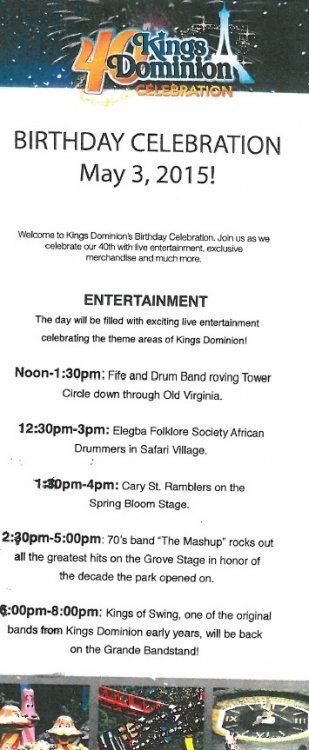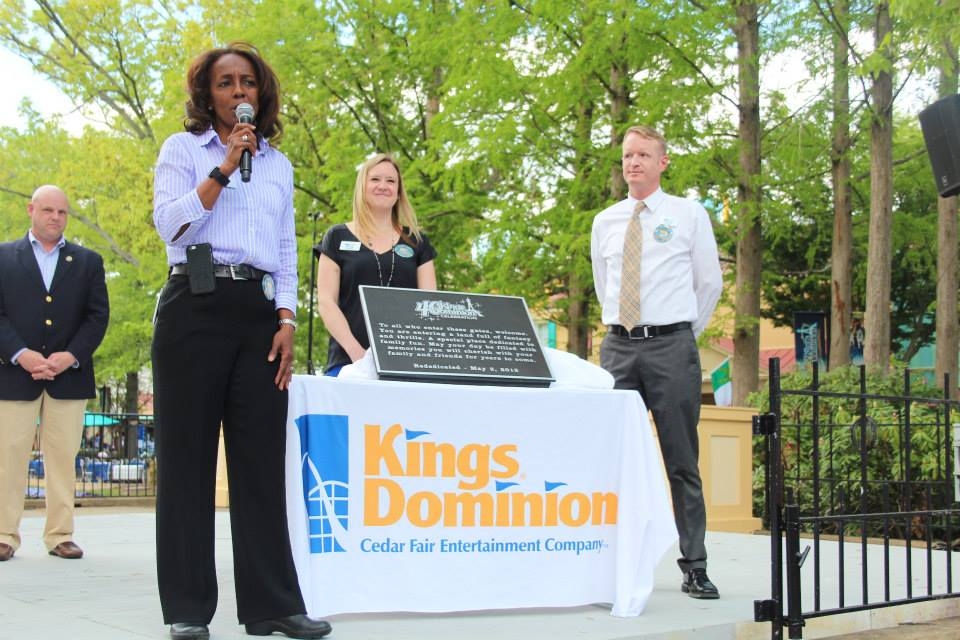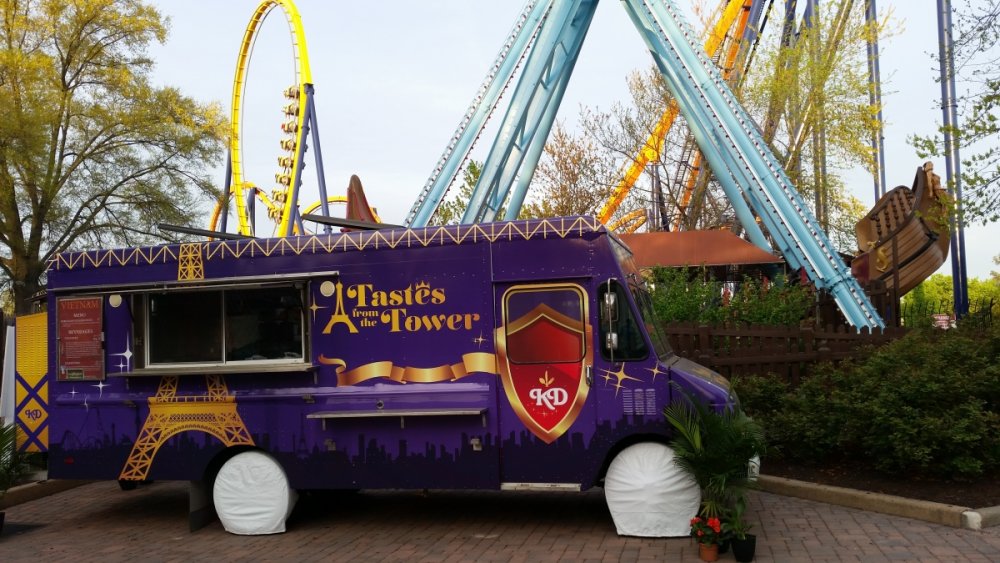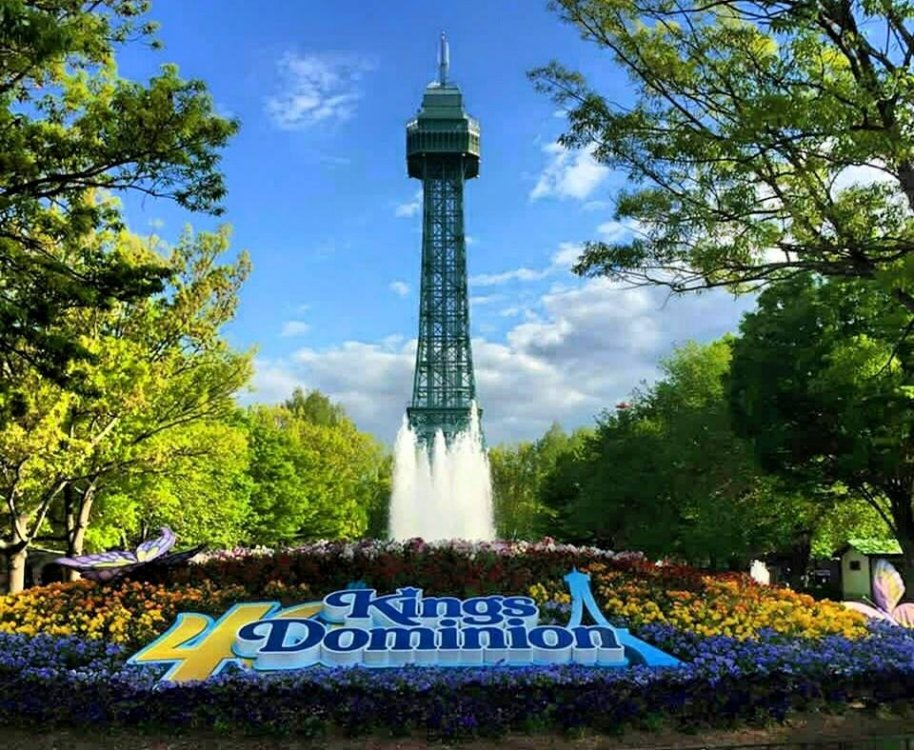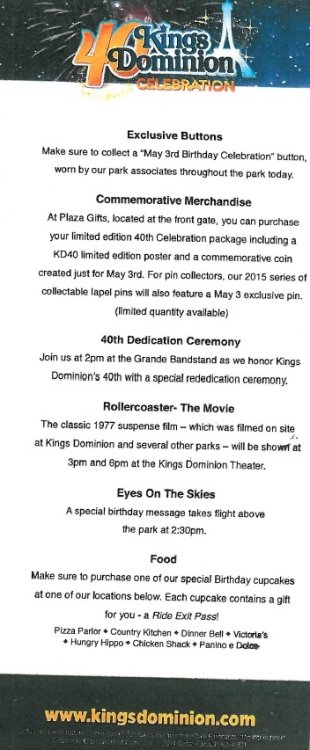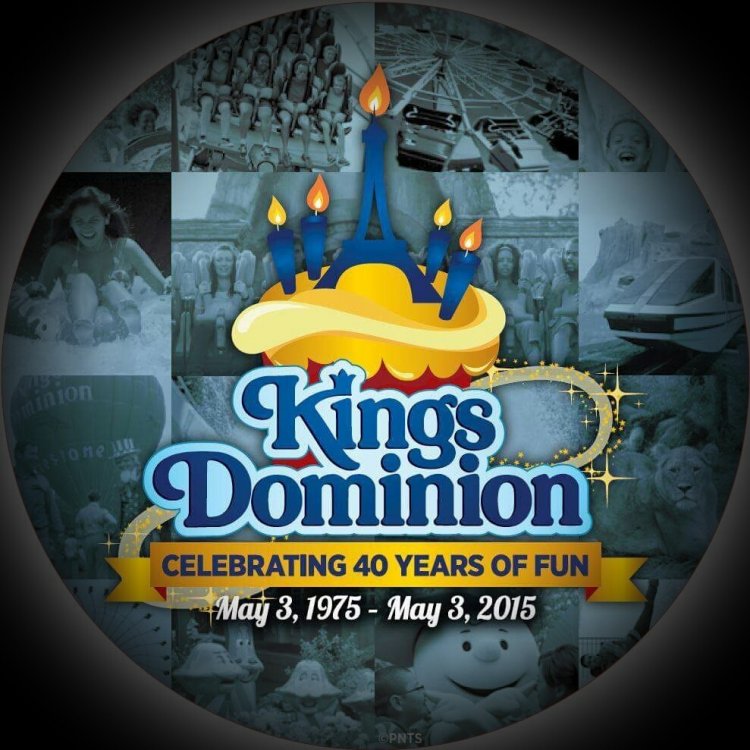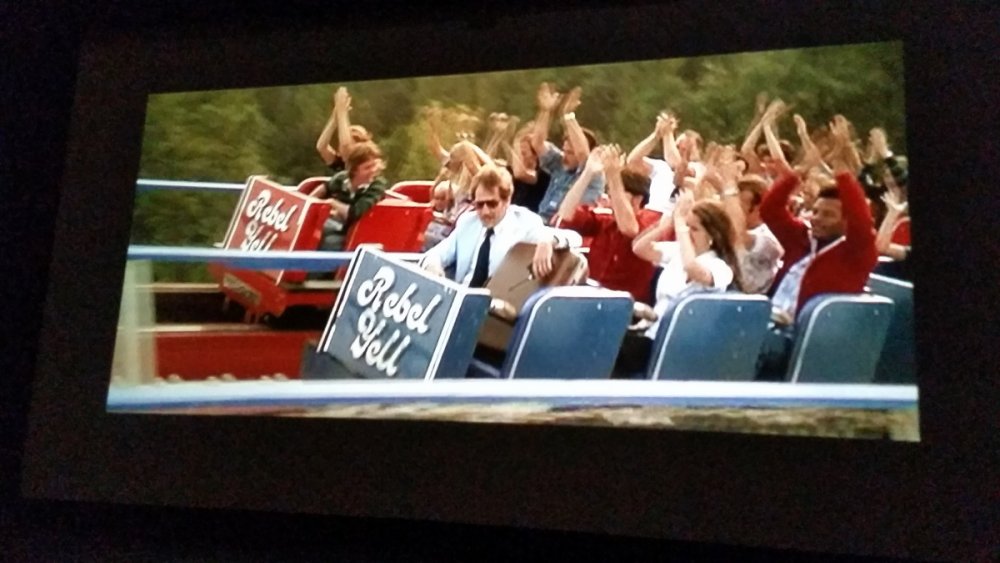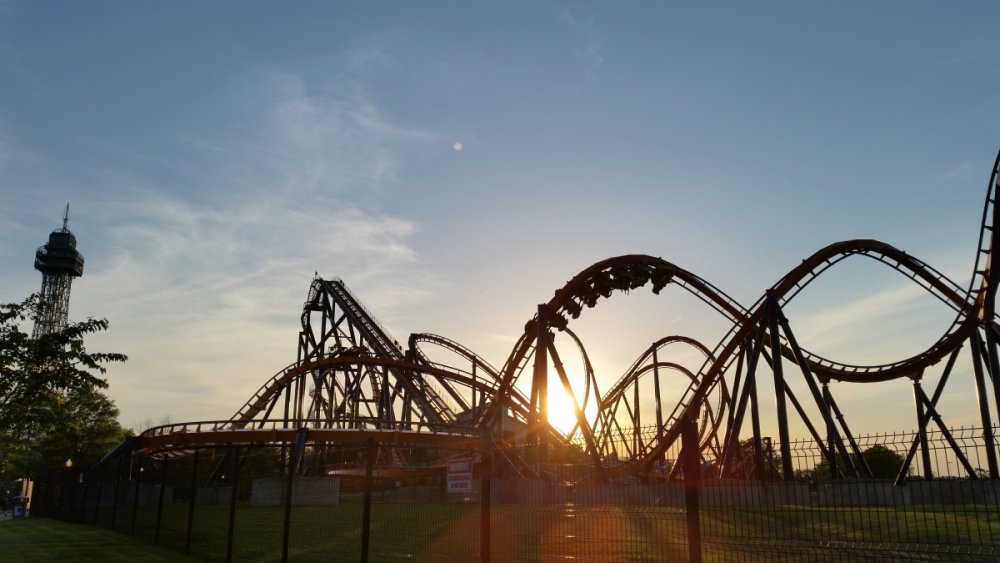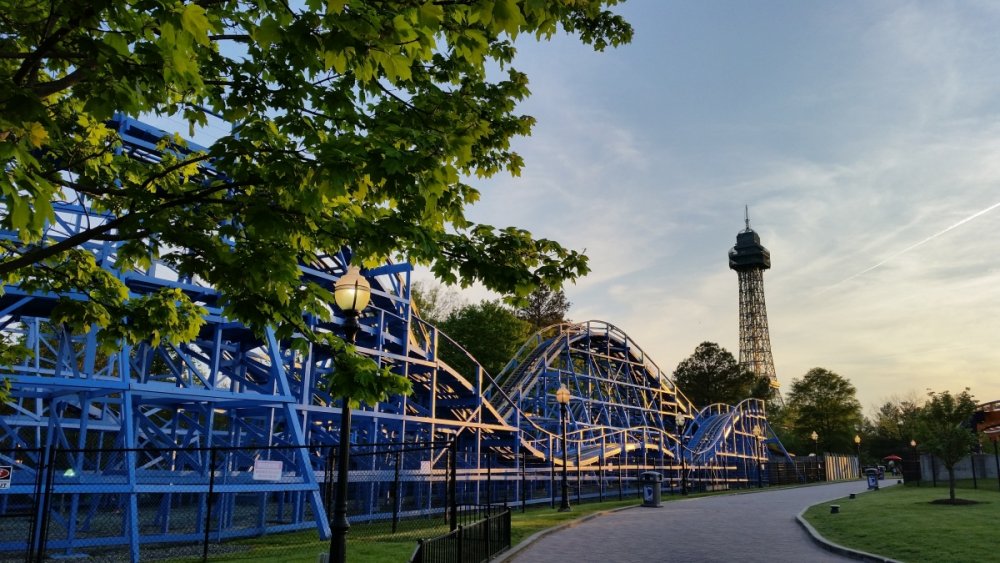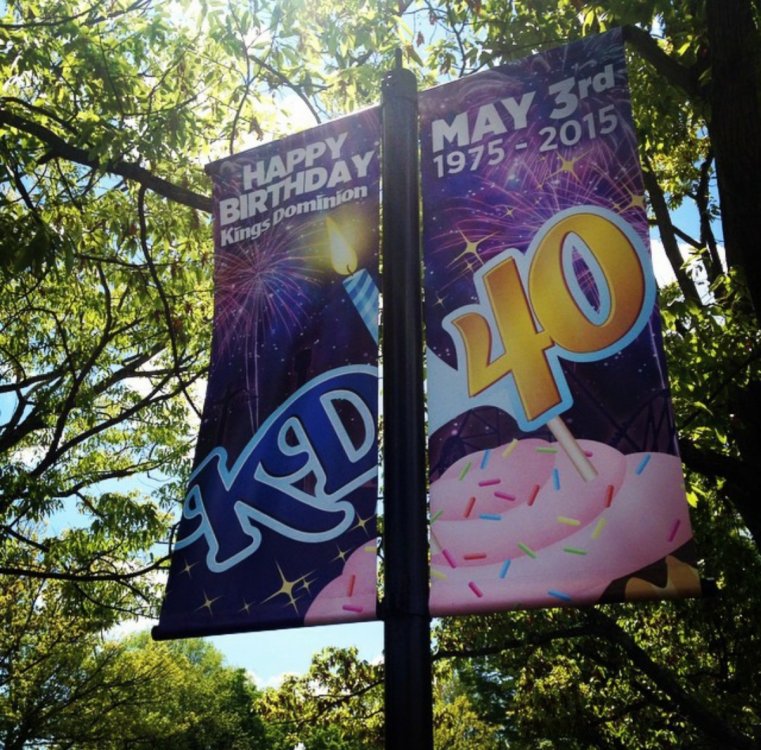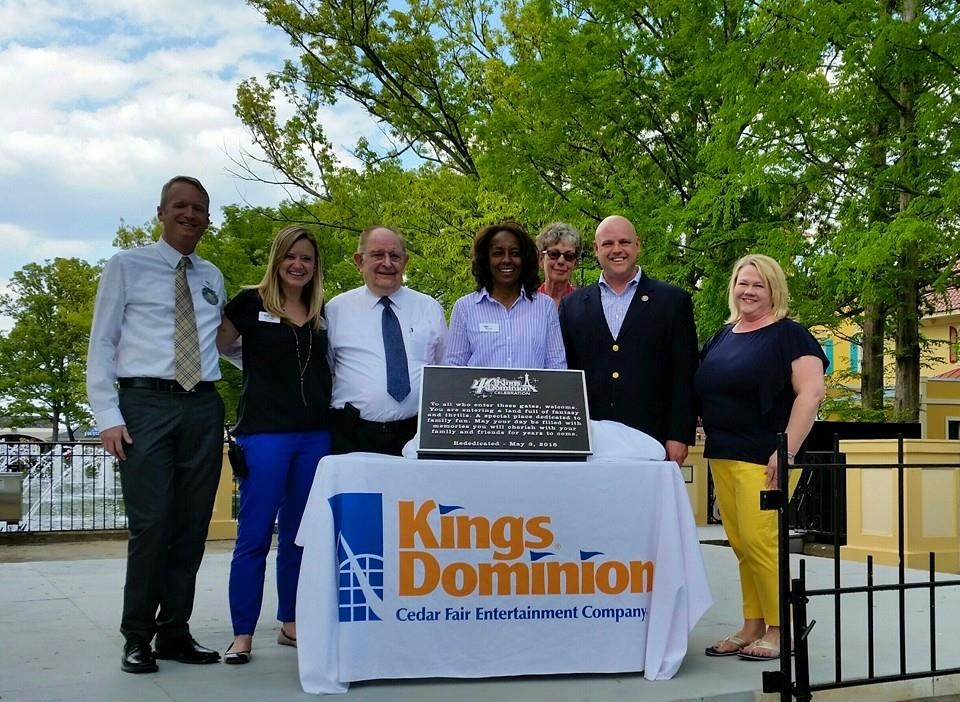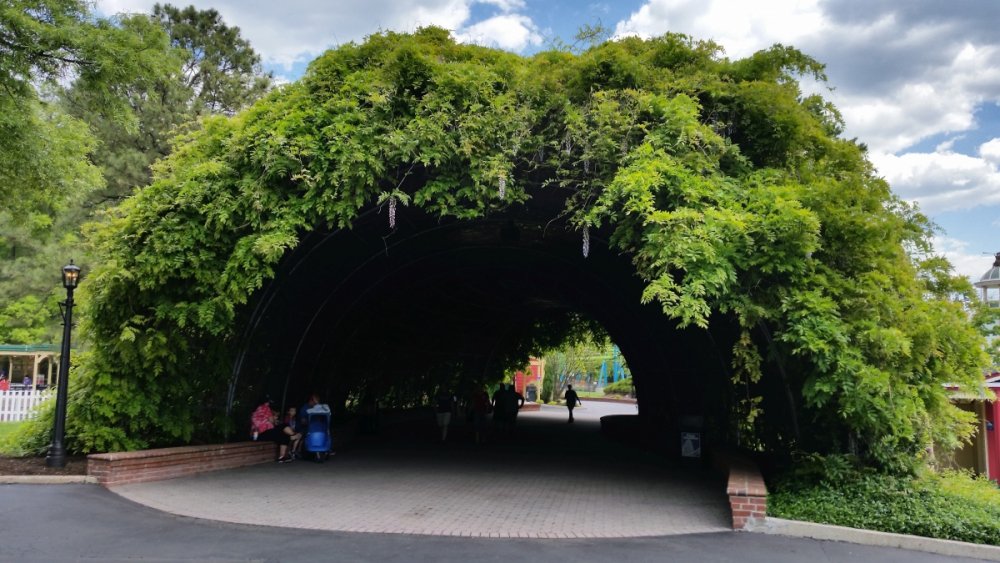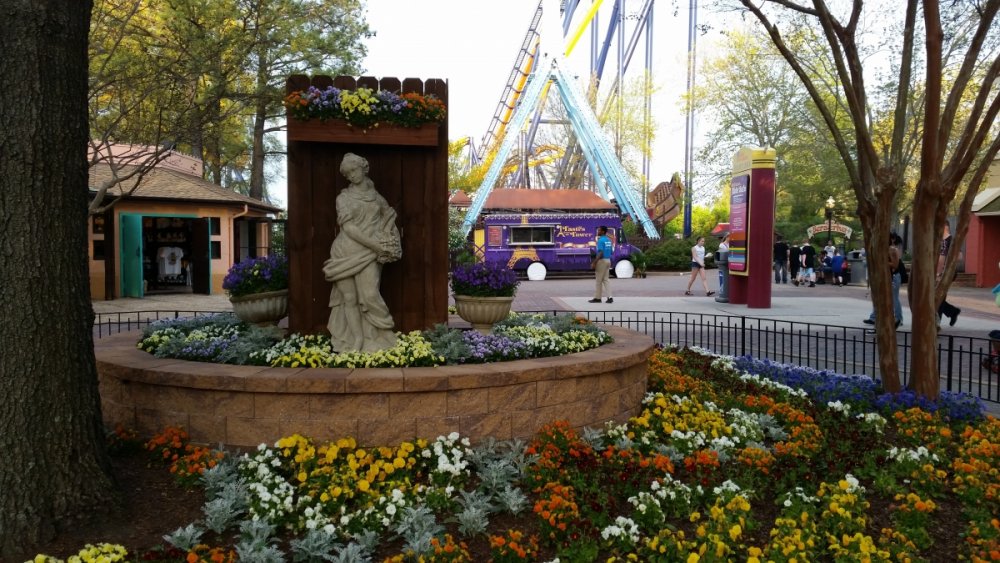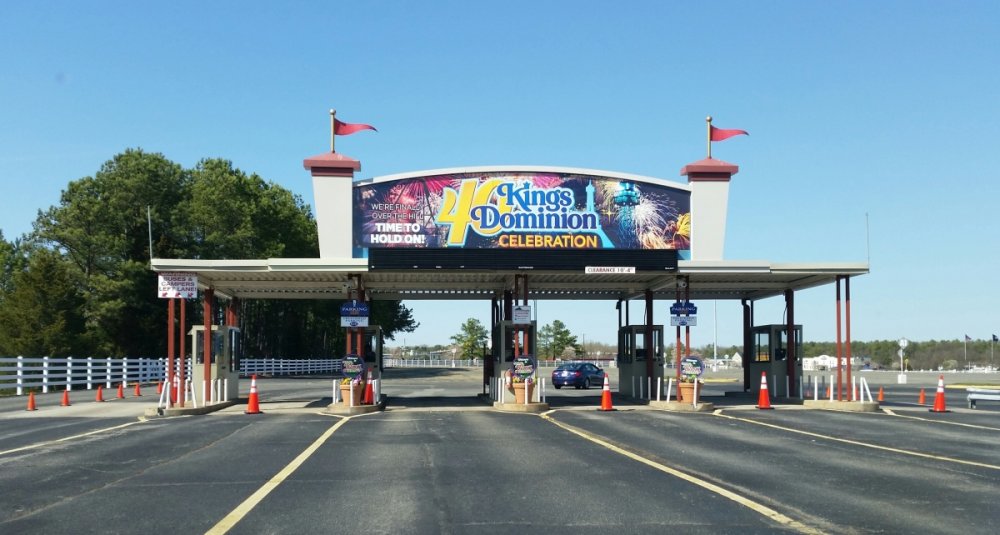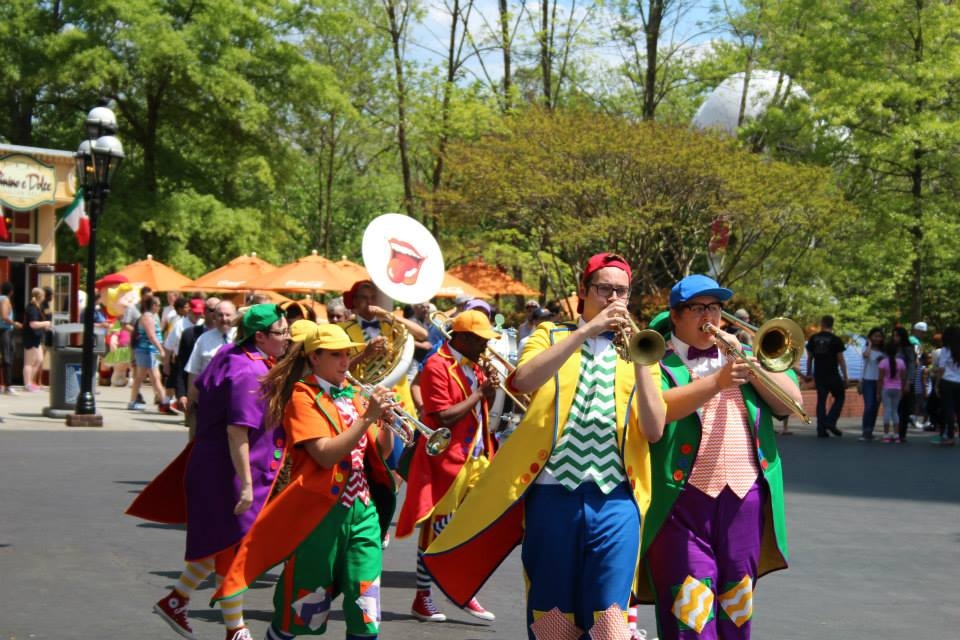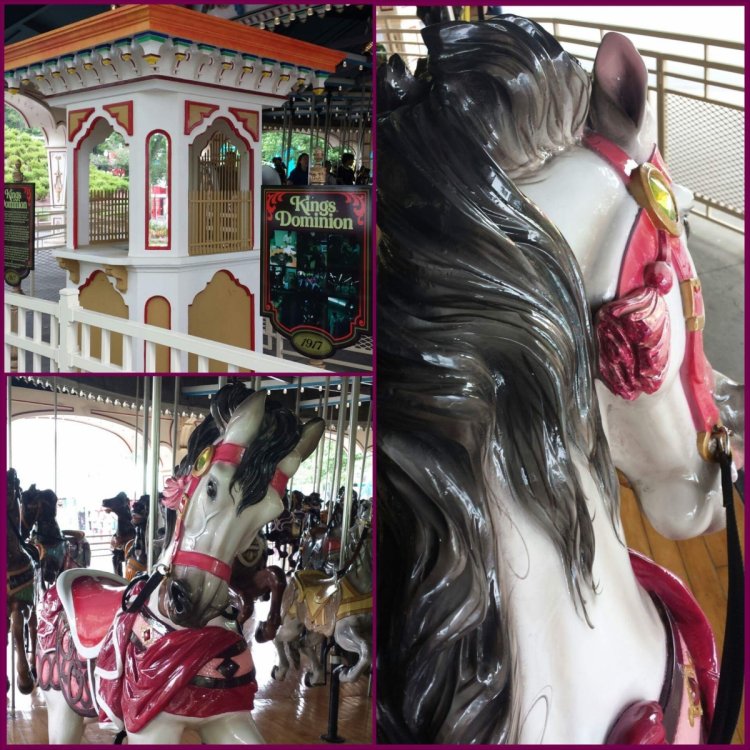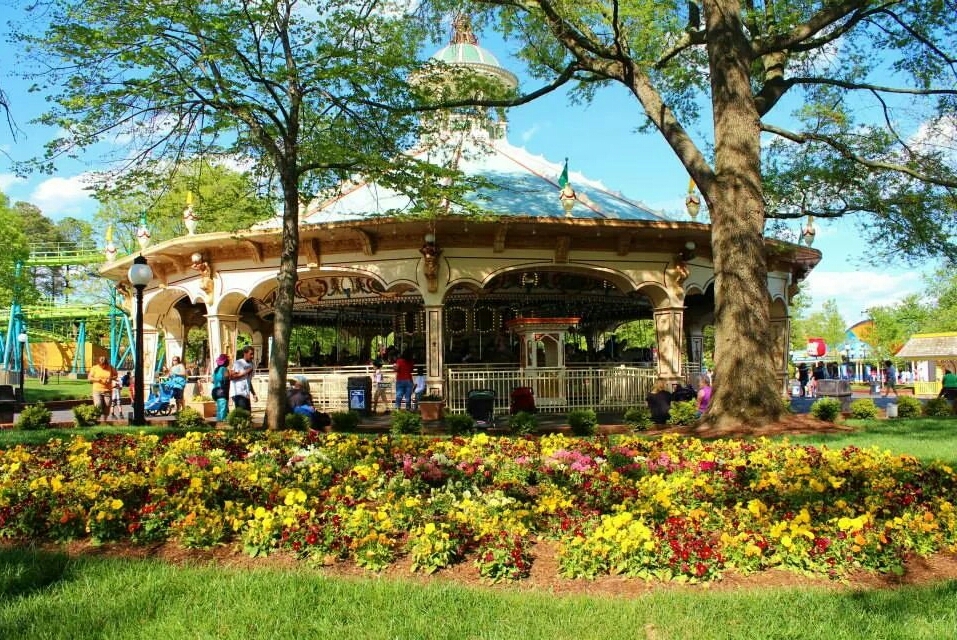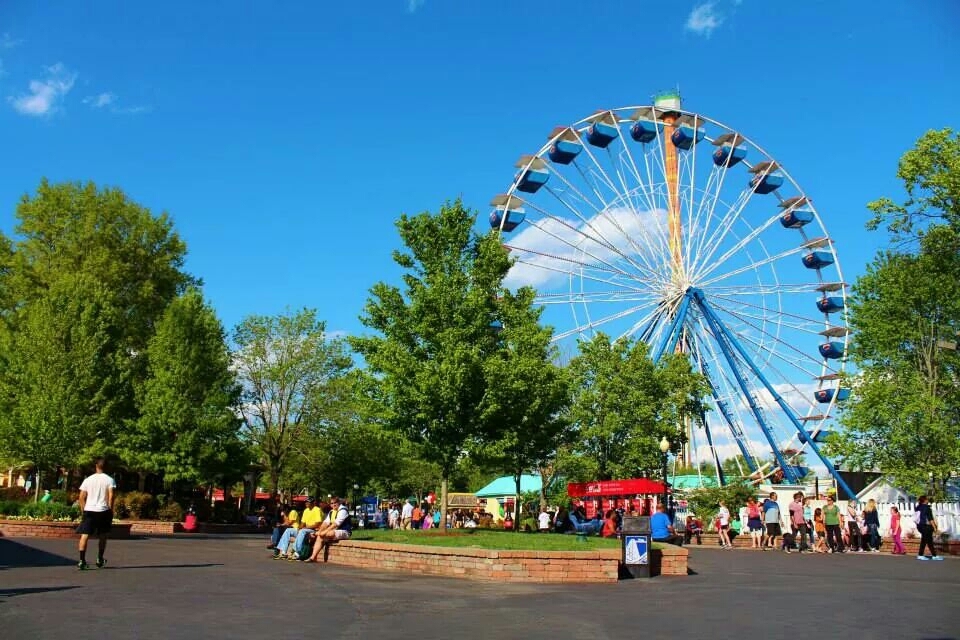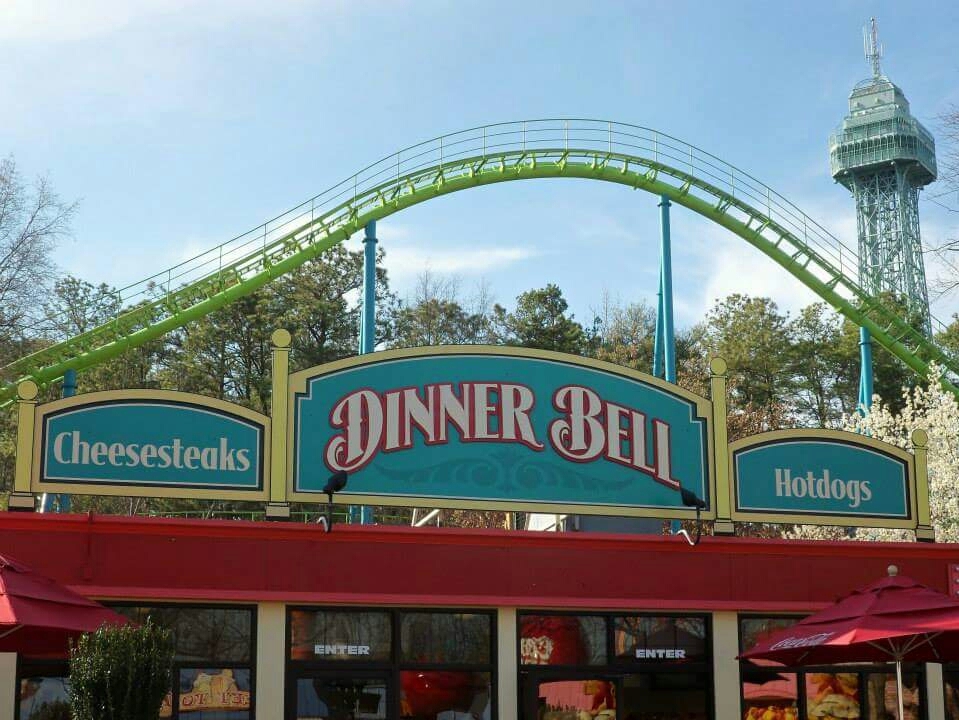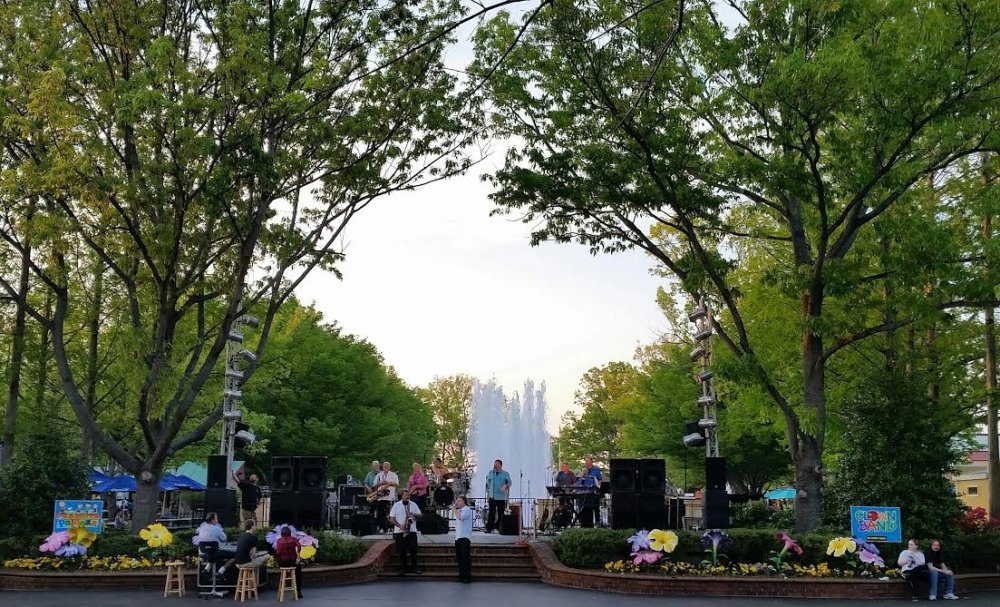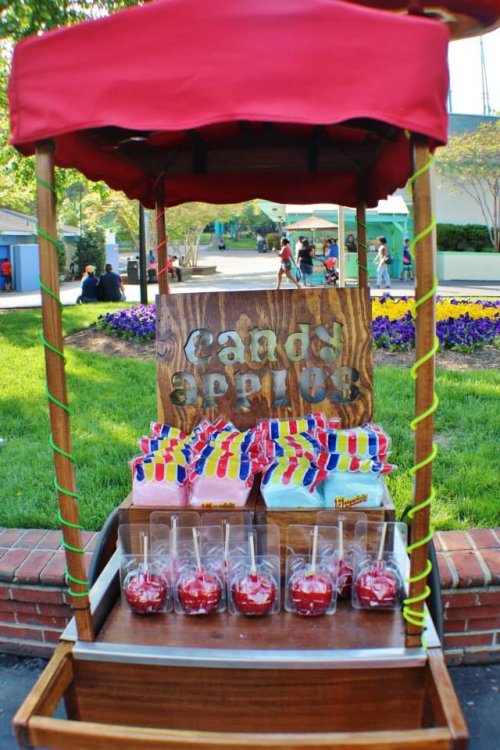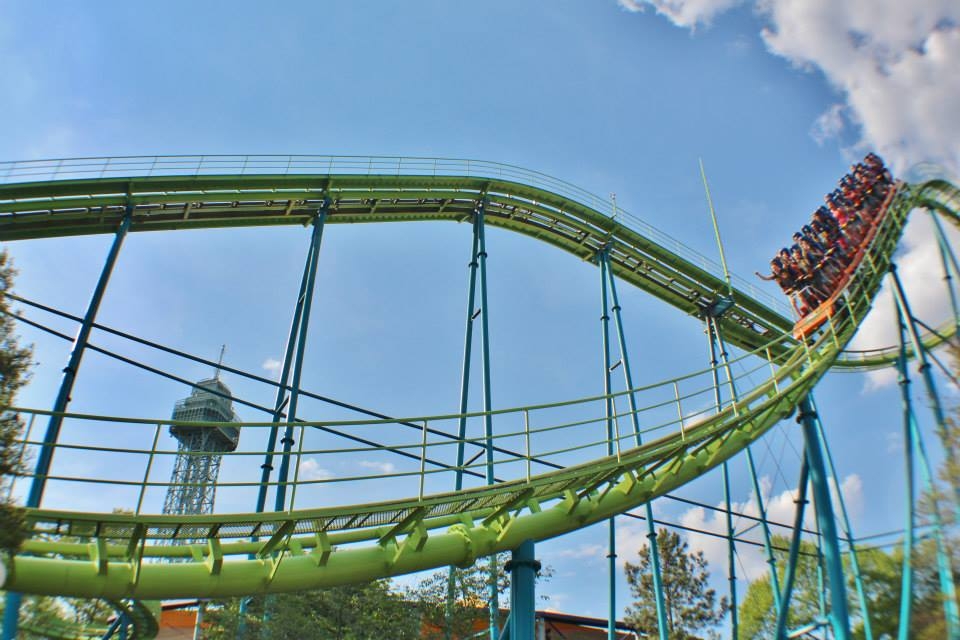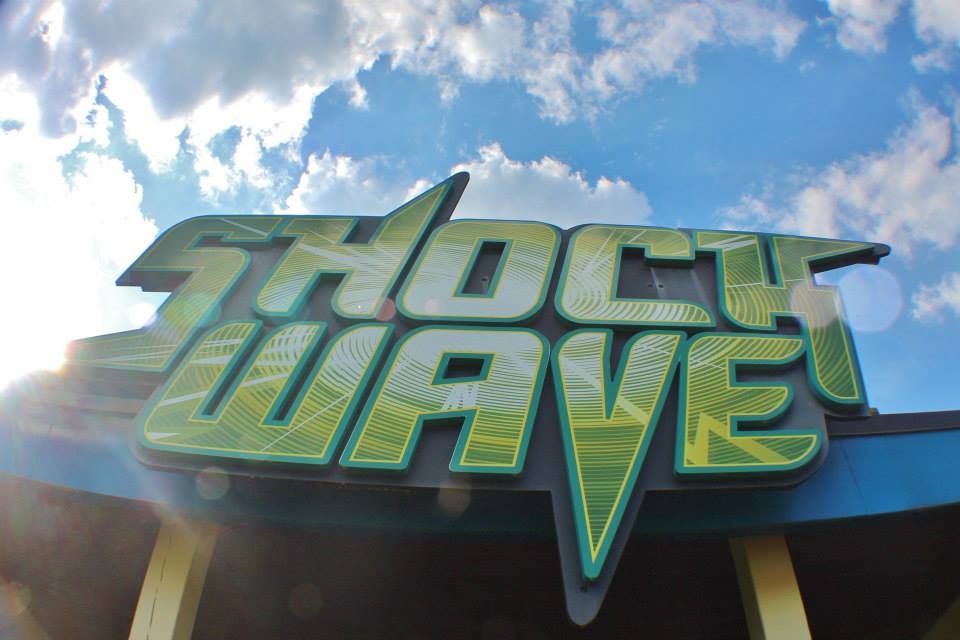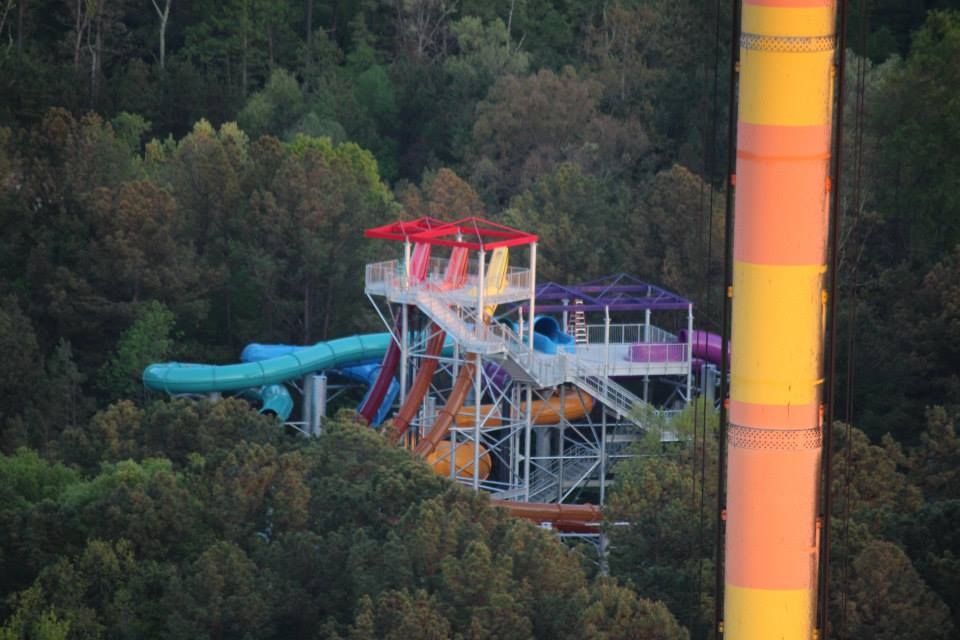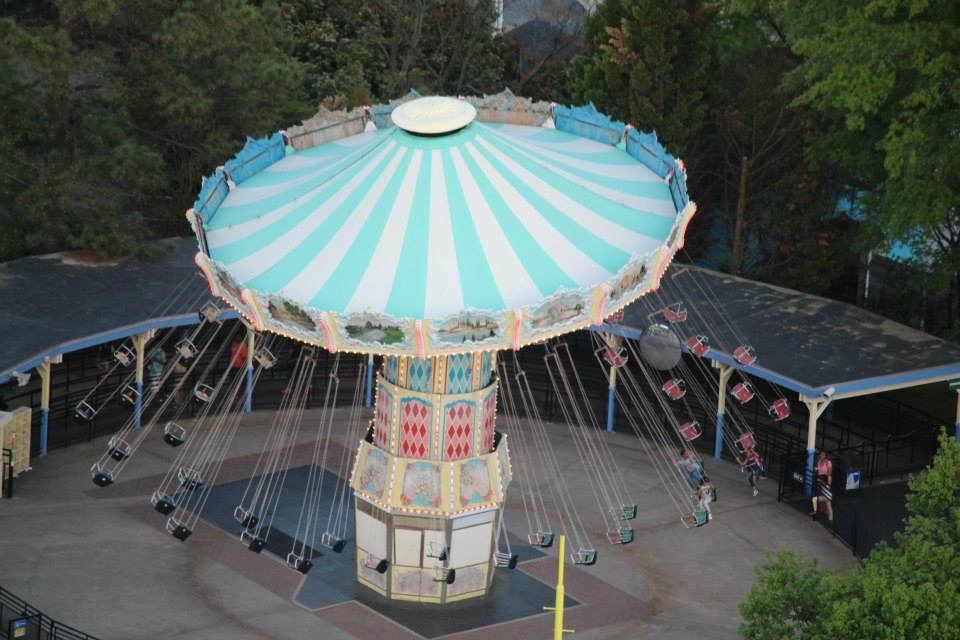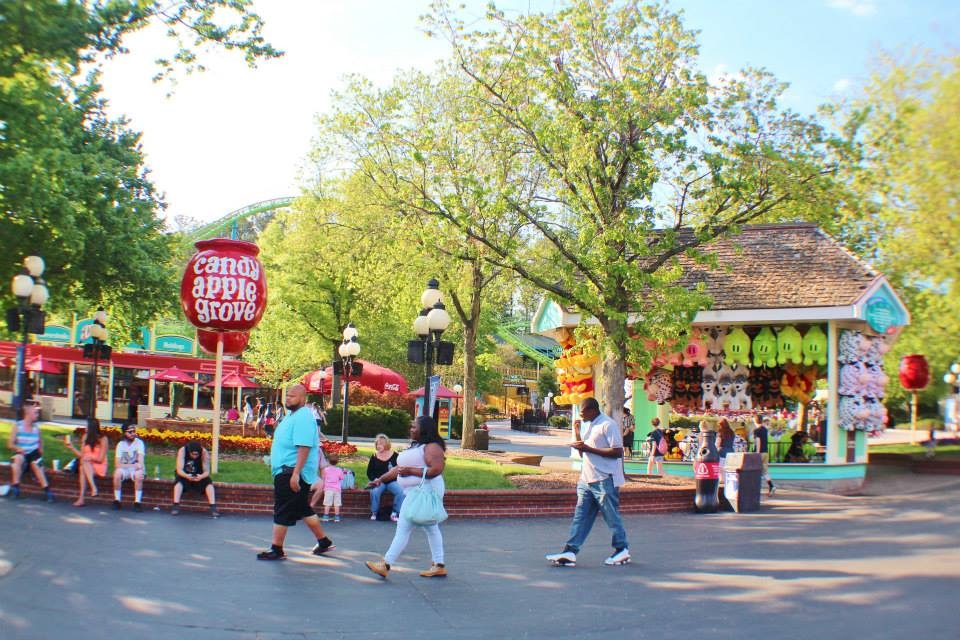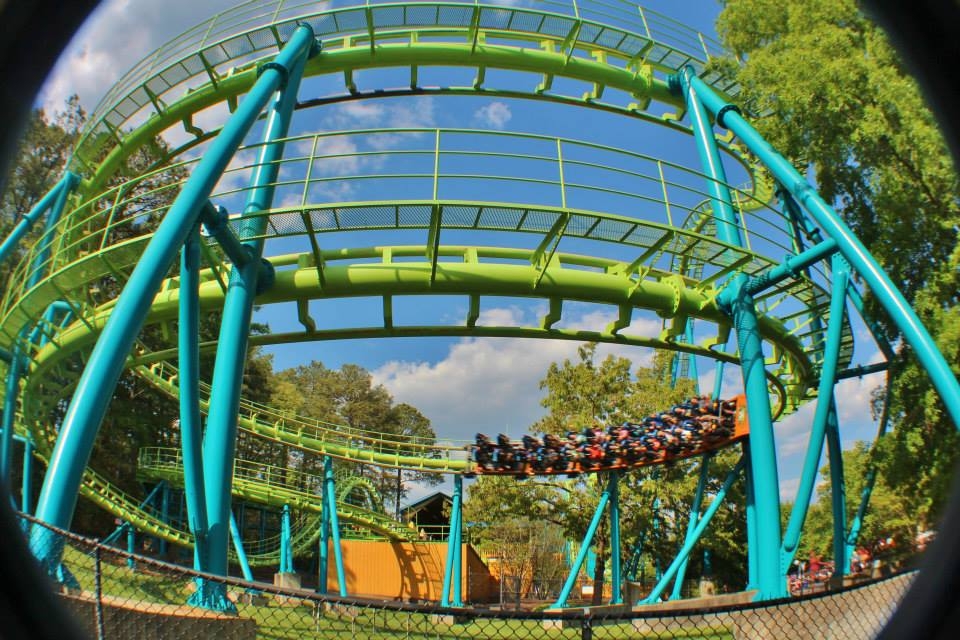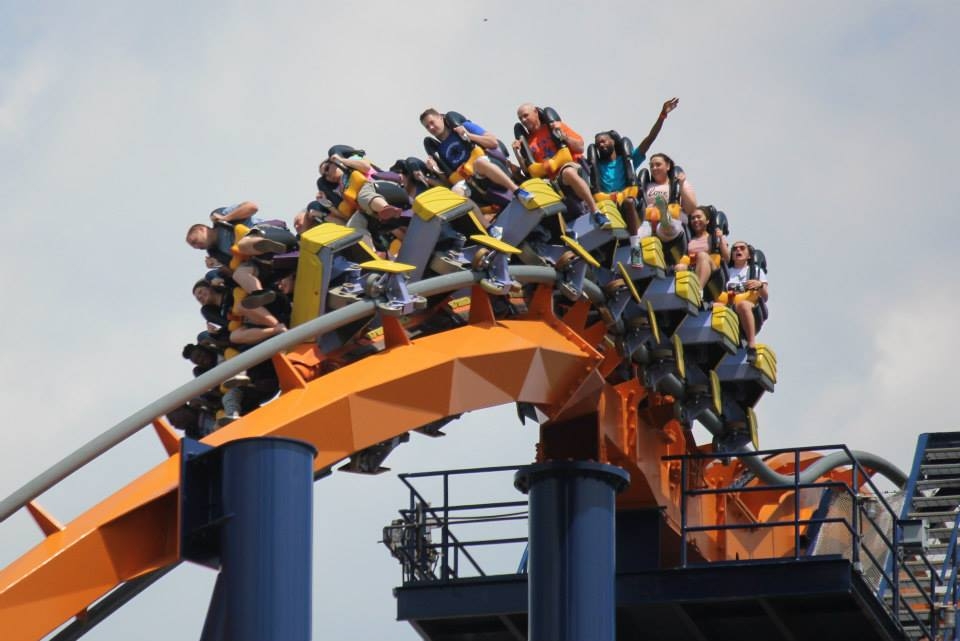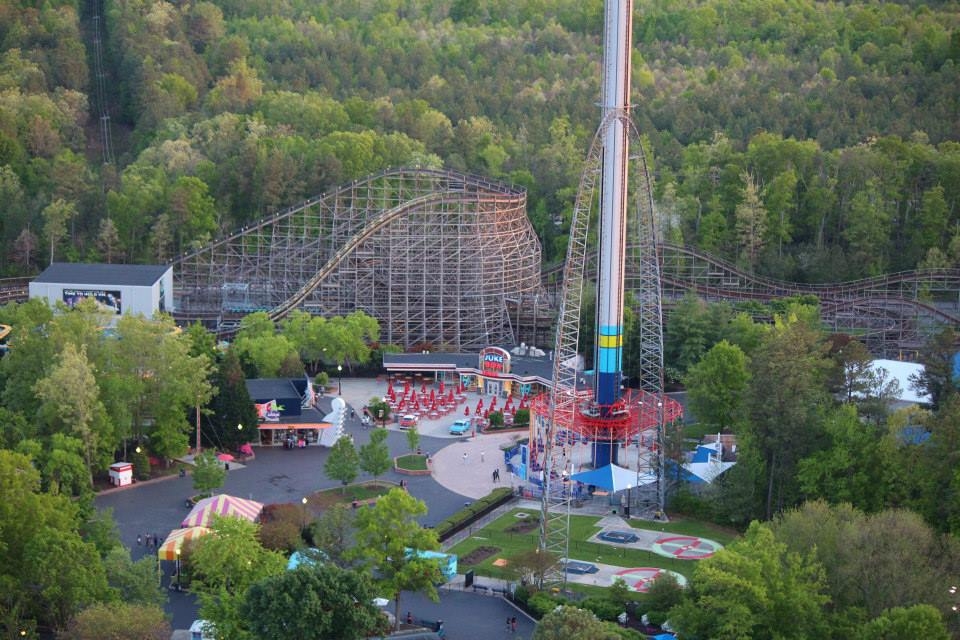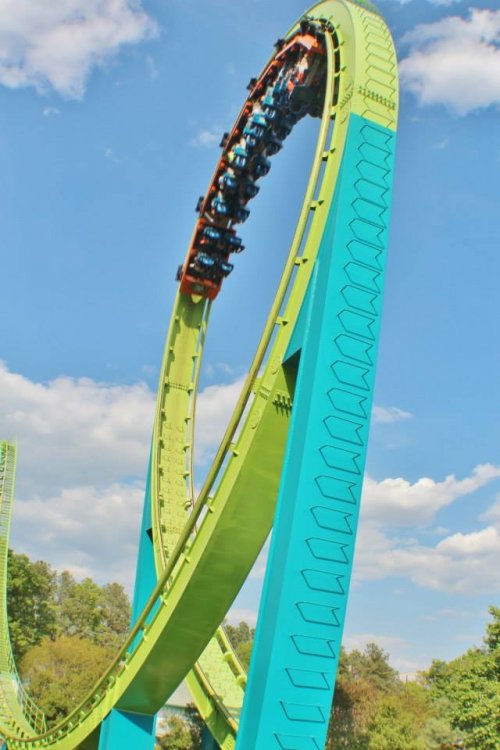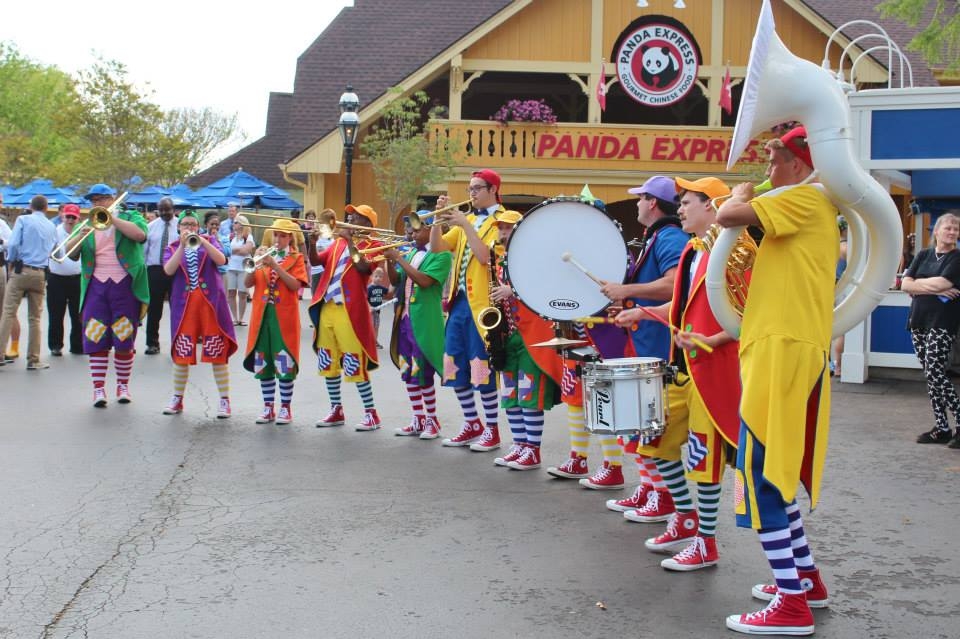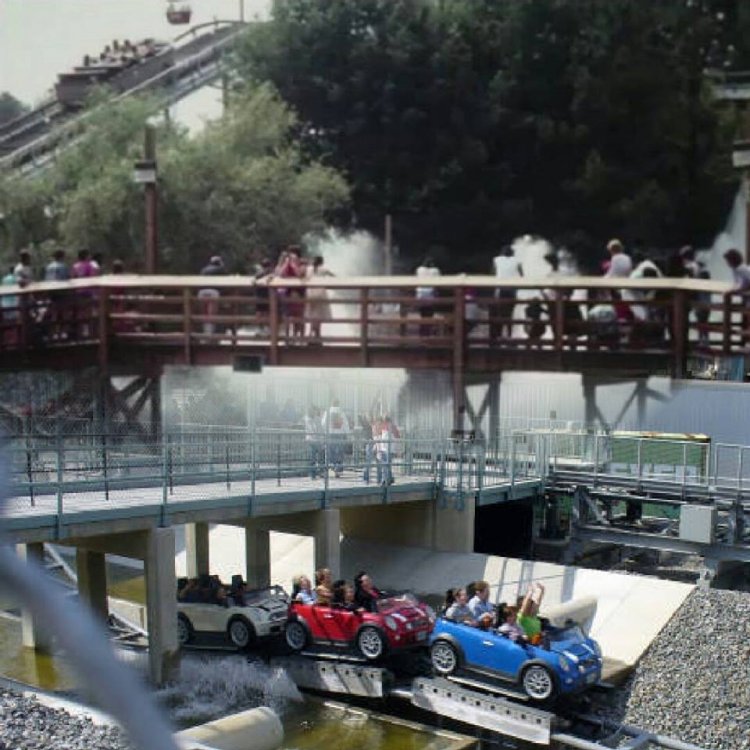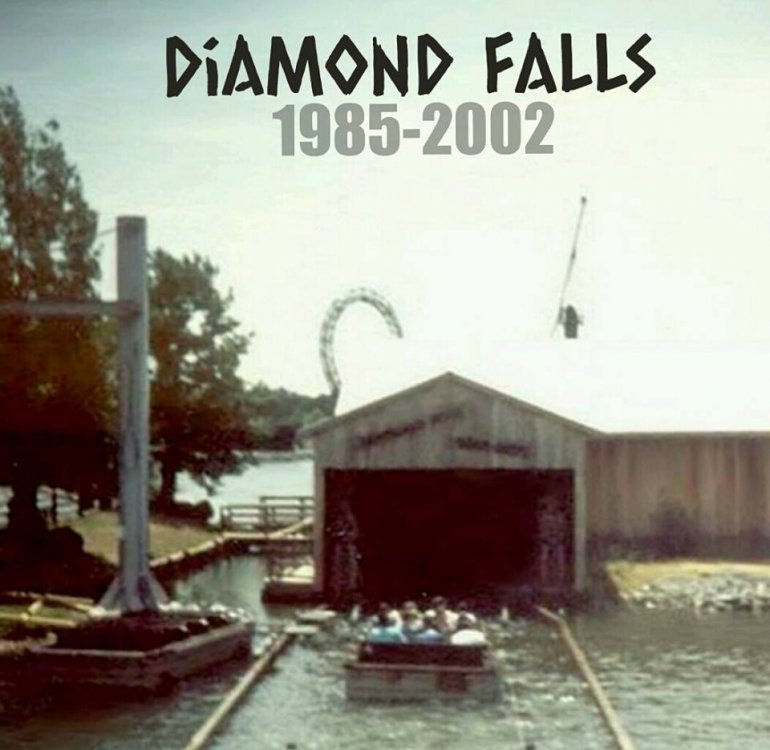
KD Golden Years
Members-
Posts
21 -
Joined
-
Last visited
Everything posted by KD Golden Years
-
The untold story of Shockwave: “You can now loop the loop in a standing posture!” “This is the standing coaster no one ever created before,” states the oddly-translated 1983 brochure, published by Togo International Inc. of Tokyo, describing a new type of coaster called the “Astro Comet.” “… Which transcended the common sense and realized an unexpectedness. The three factors, thrill, speed and action, were thought over and over. Furthermore, its safeness was thoroughly examined from a medical standpoint and was technically authorized by the minister of construction …” Wait. What? In 1982 the world’s first stand-up coaster debuted in a park in Japan, winning the D.S. Humphrey award for excellence at the 1982 IAAPA Amusement trade show. In 1984 its manufacturer – the English language-challenged Togo International Inc. – imported the first American version to Kings Island, near Cincinnati, Ohio. It proved to be so popular Kings Dominion contracted Togo to build a similar ride there. Togo’s history went back to 1935, when they built a mechanical walking elephant kiddie ride. By 1984 they had amassed an impressive but strangely-named portfolio of rides and attractions, including the “Looping Rocket,” the “Ultra Twister,” the “Sea Panic Adventure” and the “Surprising House.” Later, in 1997, they also submitted a proposal for the Volcano coaster to KD, which included a lift hill instead of a launch to send the train out of the top of the mountain. Space for the space-age standing coaster was provided by the removal of the “Flying Carpets” giant slide and an old Italian coaster called the Galaxie, which had unfortunately been the scene of an accidental death in 1983. While Kings Dominion was found faultless in the accident, the ride’s operations and control systems had become outdated and the decision was made to remove it. Preparations for this snazzy Japanese import (which was a break from the typical German and Swiss rides more commonly installed) began in the summer of 1985, when several crates arrived from Japan at the KD maintenance tool crib. Inside the boxes were small hand tools, white cotton gloves, bottles of Japanese wine and bags of rice. Some of the guys (somewhat politically incorrectly, but this was 1985 after all) pictured a team of Japanese coolies building the ride during the day then sitting around the construction site, imbibing on rice and Saki at night. It was wrong, and we knew it, but it was just so culture-clash weird. The proposal had impressive credentials. It was going to be about 2,210 feet long, with a 93-ft high lift hill, a maximum tilting angle of 48 degrees, and a 70-ft high loop. At a maximum speed of just under 50 mph with two train operation, the ride boasted of a 1,200-person hourly capacity – which would delight any park bean counter. Large unpainted sections of track began appearing in the late fall, still coated in mill dust, and were stacked in the parking lot. More crates, bags and boxes poured in, including the train cars, wheel assemblies and already assembled high-tech robot-like restraints – to the joy of maintenance and construction, who were more used to receiving a pile of oddly-shaped pieces from the Europeans and expected to assemble them, usually with no manuals or guides. The land was cleared, concrete was poured and construction began in earnest after the park shut down in October, 1985. The 5-month race was on: get a new coaster built and operating by April 2, 1986. Around this time three engineers from Togo showed up: a man named Kanayama was in charge of the mechanical systems; Sano was in charge of actual construction, and a third one whose name escapes me was in charge of the electrical installations. They appeared like the FBI agents in the movie ET: in white coveralls tucked into shiny black boots, and white hard hats with chin straps. Their first night in Richmond they ate at a local Japanese restaurant and were so impressed with their female server’s grasp of English they hired her to be their interpreter during their entire stay in Doswell. It was a good thing – not one of those three guys spoke a lick of English, and certainly not one of us knew Japanese. “The amusement industry has been placing increasingly an important role in our society today, where one seeks new kind of relationship among the people alienated mutually. Togo creates and presents rich amusement space, from now toward the future, based on the true human society.” -1982 Togo brochure, “Amusement Machine.” What was remarkable about construction was that things actually fit together. This was a far cry from rides like the 1984 Intamin-manufactured Diamond Falls, where almost nothing fit and everything had to be modified, pried, opened, spread and re-drilled to force it all together. The standing coaster slipped together like a giant erector set, and the track was completed shortly after the New Year. The only difficulty was that Japanese metric thread pitch on their fasteners were different that European versions, so extra care had to be taken to make sure the correct metric fasteners, nuts and washers were mated. The mechanical and electrical installations went much slower than the structure. The ride had huge 1986 electrical requirements – everything on this ride was over-sized and built 3 times stronger and heavier than it probably needed to be. An American engineer assisting with the lift mechanism remarked the gearbox and drive pulleys appeared to be off of old battleships. The vehicle axles and couplings were massive. The lift chain was bigger and beefier than any other roller coaster this writer had ever seen, and miles of conduit and pipe had to be run to contain the pneumatic lines and electrical cable to operate it all. Once the loading section was installed the carpenter shop began building the station around it. Huge and enormously expensive laminated arches were brought in, and the glass-enclosed operator’s panel was situated above the station to afford the board operator visibility of both the loading platform and the entire lift hill. One day after track installation had been almost completed this writer noticed that where the track exited out of the helix and passed under itself looked suspiciously low. Coasters have what is called a “clearance envelope” – an imaginary field around the train, usually at least 8 feet in diameter to ensure riders cannot touch anything while in operation. In this case the clearance envelope appeared to be within Togo’s (and Kings Dominion) minimum standards. Kings Island’s track was laid out slightly different and did not contend with this issue. At 6’-4,” and the tallest guy in the department, I was positive that if I were riding this ride I could touch the “backbone” rail of the track above me. I tracked down our manager and described the situation to him. After looking he agreed that the clearance looked insufficient, and ordered some guys to bring one of the assembled cars down to the ride from the maintenance shop. A crane set the car on the track and it was rolled into position under the helix. As the three Togo engineers watched, I stood in the restraint, got locked in, then reached up and (even with my arms in the shoulder restraints) easily slapped both hands on the rail above me. Our manager turned to Kanayama and said “that is unacceptable.” Attempting to defuse the situation, Kanayama smiled and jokingly made a chopping motion at my knees, indicating that the fix was to cut my legs off at the knees. It would have been somewhat funny if the inevitable “Japanese prison camp” jokes had not begun circulating among the guys watching. Very, very politically incorrect, but sometimes, that is what maintenance guys do. The next day a fix was proposed. A millwright torch-cut a notch out of the overhead backbone, then welded plates in the notch. Two horizontal braces were custom bent to fit inside the crossties for strength compensation, and it was all welded solid into place. The fix worked, and even today, a person can stand outside the fence behind the helix and still see the “Brumfield notch” in the track. Each restraint on the train contain three separate, independently-operating positive closed loop hydraulic systems: One for the height adjustment cylinder, one for the lap restraint and one for the shoulder restraints. The operator activated the electrical operation from the control panel for loading, then once riders are loaded it de-energized. Foot pedals on each car allowed the loading operators to temporarily energize the restraints to allow adjustments to ensure the riders were in proper standing position before the train was dispatched. Once the power to the restraints was de-energized, it was impossible to open them. There was also a massive spring within the restraint device to cushion the 4G’s pulled by the loop, which were amplified by riders being in a standing posture. In early March, 1986, construction was complete and a complete train was placed on the track and the first test was ready to commence. The President of Togo, Mr. Tomokazu Yamada and his comely young daughter flew in to witness the first cycle, and all of the full-time KD employees took a break to come watch. We then saw the reason for the Saki and rice that had arrived months earlier: it was customary in Japan to bless the operation of a new ride by sprinkling the wheels. We all stood, impatiently but reverently, while Mr. Yamada took about 10 minutes to walk around the entire train, pouring perfectly good wine on the wheels and tossing on a handful of uncooked white rice. When he was finished, the lift was started, and an empty train was dispatched from the station, clattering onto the chain and beginning its slow climb up the 93-ft. hill. “Laughter and Cry. Passenger’s facial expressions are multifarious. Girls enjoy the momentary space flight with their eyes opened, but boys do it with their eyes closed. The varied dynamic course leads you to the thrilling world.” -1983 Togo brochure, “Astro Comet.” The empty train ran without a hitch, down the first hill, through the loop, across the camel-back then into the giant helix. It passed uneventfully under the “Brumfield notch,” over another camel-back then around the lower back curve, banging to a stop in the remote e-brake zone just like it was supposed to. Everyone cheered. On the second cycle, the general manager, along with several park VPs, managers and Mr. Yamada in the very front climbed aboard to take the inaugural ride. Mr. Yamada started waving going up the lift and did not stop until the train was safely back in the brake zone. He was ecstatic. The ride was a hit. The next cycle all the construction employees were invited to ride. I took the second restraint in the lead car, coincidentally beside the comely young daughter of Mr. Yamada. Once on the lift she struck up a conversation in very good English: “Have you ever ridden the standing coaster?” she asked. “No I have not,” I answered. We bantered back and forth, and by the time we reached the top she asked me to join her for dinner that night. No kidding. Before I got engaged, I couldn’t buy a date, but suddenly I appeared to have a shot with the daughter of a millionaire Japanese businessman. I showed her my ring, thanked her but told her I was engaged to a lovely woman named Susan. I was not seduced by the promises of a life of Japanese amusement riches, and next January, 2016, Susan and I will celebrate our 29th wedding anniversary. “Circular safety arms are adjustable and fits the passenger’s body well. And a safety bar fits the belly well too. These devices are automatic and keeps the safety perfectly.” - “Astro Comet” brochure. The “perfectly safe” ride was amazing, although I thought the back curve was too sharp and abrupt. But it was a unique experience, and I could not slap any rails over my head at any point on the ride. And, because of the Shockwave, for the first time in its history Kings Dominion logged over 2 million visitors during the 1986 season – a remarkable accomplishment – and also for the first time paid a $500 employee bonus at Christmas. In the late 1990s there was an accidental death on the Shockwave. Apparently a small man was able to wiggle his right shoulder out of the restraint, and when the train went around that sharp and abrupt lower back curve he was thrown off and struck the handrail. While Kings Dominion was held harmless in the man’s unfortunate death, it was with no small amount of irony noted that this death occurred at the exact same spot as the last one – on the former Galaxie ride, which as you recall was the former ride at this location. Despite maintenance and construction’s somewhat “home-grown” humor regarding working with the Japanese, construction really was one of the most positive experiences any of us ever had building a ride, and we appreciated their commitment to building the best ride possible. As the Shockwave approaches its 30th anniversary at Kings Dominion, it is rumored to be on the chopping block. But the Shockwave (which remarkably ran under the same name all 30 of those years) can hold its head high if it indeed goes off into the amusement after-market sunset – it has a lot to be proud of. “Please, go ahead and try the standing coaster!” -Astro Comet brochure. ~ Story By: Dale Brumfield
-
No problem at all, glad I'm able to share these kind of stories from our KD Golden Years Facebook page, many more such as King Kobra, Diamond Falls, Sky Pilot, etc. on there from the amazing arthur, Dale Brumfield. His stories are out of this world! Ah, such a great memory! I had one and also one of Anaconda, such great times.
-
It's actually been the #1 trend since yesterday morning, after the announcement. Far as the 40th, it's pretty much a memory now. I remember that you told me that you had "inside sources" on Instagram (you're @kingsdominion75, right?), so how long ago did you know for certain that the Shockwave was on the way out (just curious, no source disclosure needed)? For some time now, reasoning I took a lot of photos during sunset/cool sky views last post-season.
-
They came. They saw. They conquered...the untold story of "Shockwave." “This is the standing coaster no one ever created before,” states the oddly-translated 1983 brochure, published by Togo International Inc. of Tokyo, describing a new type of coaster called the “Astro Comet.” “… Which transcended the common sense and realized an unexpectedness. The three factors, thrill, speed and action, were thought over and over. Furthermore, its safeness was thoroughly examined from a medical standpoint and was technically authorized by the minister of construction …” Wait. What? In 1982 the world’s first stand-up coaster debuted in a park in Japan, winning the D.S. Humphrey award for excellence at the 1982 IAAPA Amusement trade show. In 1984 its manufacturer – the English language-challenged Togo International Inc. – imported the first American version to Kings Island, near Cincinnati, Ohio. It proved to be so popular Kings Dominion contracted Togo to build a similar ride there. Togo’s history went back to 1935, when they built a mechanical walking elephant kiddie ride. By 1984 they had amassed an impressive but strangely-named portfolio of rides and attractions, including the “Looping Rocket,” the “Ultra Twister,” the “Sea Panic Adventure” and the “Surprising House.” Later, in 1997, they also submitted a proposal for the Volcano coaster to KD, which included a lift hill instead of a launch to send the train out of the top of the mountain. Space for the space-age standing coaster was provided by the removal of the “Flying Carpets” giant slide and an old Italian coaster called the Galaxie, which had unfortunately been the scene of an accidental death in 1983. While Kings Dominion was found faultless in the accident, the ride’s operations and control systems had become outdated and the decision was made to remove it. Preparations for this snazzy Japanese import (which was a break from the typical German and Swiss rides more commonly installed) began in the summer of 1985, when several crates arrived from Japan at the KD maintenance tool crib. Inside the boxes were small hand tools, white cotton gloves, bottles of Japanese wine and bags of rice. Some of the guys (somewhat politically incorrectly, but this was 1985 after all) pictured a team of Japanese coolies building the ride during the day then sitting around the construction site, imbibing on rice and Saki at night. It was wrong, and we knew it, but it was just so culture-clash weird. The proposal had impressive credentials. It was going to be about 2,210 feet long, with a 93-ft high lift hill, a maximum tilting angle of 48 degrees, and a 70-ft high loop. At a maximum speed of just under 50 mph with two train operation, the ride boasted of a 1,200-person hourly capacity – which would delight any park bean counter. Large unpainted sections of track began appearing in the late fall, still coated in mill dust, and were stacked in the parking lot. More crates, bags and boxes poured in, including the train cars, wheel assemblies and already assembled high-tech robot-like restraints – to the joy of maintenance and construction, who were more used to receiving a pile of oddly-shaped pieces from the Europeans and expected to assemble them, usually with no manuals or guides. The land was cleared, concrete was poured and construction began in earnest after the park shut down in October, 1985. The 5-month race was on: get a new coaster built and operating by April 2, 1986. Around this time three engineers from Togo showed up: a man named Kanayama was in charge of the mechanical systems; Sano was in charge of actual construction, and a third one whose name escapes me was in charge of the electrical installations. They appeared like the FBI agents in the movie ET: in white coveralls tucked into shiny black boots, and white hard hats with chin straps. Their first night in Richmond they ate at a local Japanese restaurant and were so impressed with their female server’s grasp of English they hired her to be their interpreter during their entire stay in Doswell. It was a good thing – not one of those three guys spoke a lick of English, and certainly not one of us knew Japanese. “The amusement industry has been placing increasingly an important role in our society today, where one seeks new kind of relationship among the people alienated mutually. Togo creates and presents rich amusement space, from now toward the future, based on the true human society.” -1982 Togo brochure, “Amusement Machine.” What was remarkable about construction was that things actually fit together. This was a far cry from rides like the 1984 Intamin-manufactured Diamond Falls, where almost nothing fit and everything had to be modified, pried, opened, spread and re-drilled to force it all together. The standing coaster slipped together like a giant erector set, and the track was completed shortly after the New Year. The only difficulty was that Japanese metric thread pitch on their fasteners were different that European versions, so extra care had to be taken to make sure the correct metric fasteners, nuts and washers were mated. The mechanical and electrical installations went much slower than the structure. The ride had huge 1986 electrical requirements – everything on this ride was over-sized and built 3 times stronger and heavier than it probably needed to be. An American engineer assisting with the lift mechanism remarked the gearbox and drive pulleys appeared to be off of old battleships. The vehicle axles and couplings were massive. The lift chain was bigger and beefier than any other roller coaster this writer had ever seen, and miles of conduit and pipe had to be run to contain the pneumatic lines and electrical cable to operate it all. Once the loading section was installed the carpenter shop began building the station around it. Huge and enormously expensive laminated arches were brought in, and the glass-enclosed operator’s panel was situated above the station to afford the board operator visibility of both the loading platform and the entire lift hill. One day after track installation had been almost completed this writer noticed that where the track exited out of the helix and passed under itself looked suspiciously low. Coasters have what is called a “clearance envelope” – an imaginary field around the train, usually at least 8 feet in diameter to ensure riders cannot touch anything while in operation. In this case the clearance envelope appeared to be within Togo’s (and Kings Dominion) minimum standards. Kings Island’s track was laid out slightly different and did not contend with this issue. At 6’-4,” and the tallest guy in the department, I was positive that if I were riding this ride I could touch the “backbone” rail of the track above me. I tracked down our manager and described the situation to him. After looking he agreed that the clearance looked insufficient, and ordered some guys to bring one of the assembled cars down to the ride from the maintenance shop. A crane set the car on the track and it was rolled into position under the helix. As the three Togo engineers watched, I stood in the restraint, got locked in, then reached up and (even with my arms in the shoulder restraints) easily slapped both hands on the rail above me. Our manager turned to Kanayama and said “that is unacceptable.” Attempting to defuse the situation, Kanayama smiled and jokingly made a chopping motion at my knees, indicating that the fix was to cut my legs off at the knees. It would have been somewhat funny if the inevitable “Japanese prison camp” jokes had not begun circulating among the guys watching. Very, very politically incorrect, but sometimes, that is what maintenance guys do. The next day a fix was proposed. A millwright torch-cut a notch out of the overhead backbone, then welded plates in the notch. Two horizontal braces were custom bent to fit inside the crossties for strength compensation, and it was all welded solid into place. The fix worked, and even today, a person can stand outside the fence behind the helix and still see the “Brumfield notch” in the track. Each restraint on the train contain three separate, independently-operating positive closed loop hydraulic systems: One for the height adjustment cylinder, one for the lap restraint and one for the shoulder restraints. The operator activated the electrical operation from the control panel for loading, then once riders are loaded it de-energized. Foot pedals on each car allowed the loading operators to temporarily energize the restraints to allow adjustments to ensure the riders were in proper standing position before the train was dispatched. Once the power to the restraints was de-energized, it was impossible to open them. There was also a massive spring within the restraint device to cushion the 4G’s pulled by the loop, which were amplified by riders being in a standing posture. In early March, 1986, construction was complete and a complete train was placed on the track and the first test was ready to commence. The President of Togo, Mr. Tomokazu Yamada and his comely young daughter flew in to witness the first cycle, and all of the full-time KD employees took a break to come watch. We then saw the reason for the Saki and rice that had arrived months earlier: it was customary in Japan to bless the operation of a new ride by sprinkling the wheels. We all stood, impatiently but reverently, while Mr. Yamada took about 10 minutes to walk around the entire train, pouring perfectly good wine on the wheels and tossing on a handful of uncooked white rice. When he was finished, the lift was started, and an empty train was dispatched from the station, clattering onto the chain and beginning its slow climb up the 93-ft. hill. “Laughter and Cry. Passenger’s facial expressions are multifarious. Girls enjoy the momentary space flight with their eyes opened, but boys do it with their eyes closed. The varied dynamic course leads you to the thrilling world.” -1983 Togo brochure, “Astro Comet.” The empty train ran without a hitch, down the first hill, through the loop, across the camel-back then into the giant helix. It passed uneventfully under the “Brumfield notch,” over another camel-back then around the lower back curve, banging to a stop in the remote e-brake zone just like it was supposed to. Everyone cheered. On the second cycle, the general manager, along with several park VPs, managers and Mr. Yamada in the very front climbed aboard to take the inaugural ride. Mr. Yamada started waving going up the lift and did not stop until the train was safely back in the brake zone. He was ecstatic. The ride was a hit. The next cycle all the construction employees were invited to ride. I took the second restraint in the lead car, coincidentally beside the comely young daughter of Mr. Yamada. Once on the lift she struck up a conversation in very good English: “Have you ever ridden the standing coaster?” she asked. “No I have not,” I answered. We bantered back and forth, and by the time we reached the top she asked me to join her for dinner that night. No kidding. Before I got engaged, I couldn’t buy a date, but suddenly I appeared to have a shot with the daughter of a millionaire Japanese businessman. I showed her my ring, thanked her but told her I was engaged to a lovely woman named Susan. I was not seduced by the promises of a life of Japanese amusement riches, and next January, 2016, Susan and I will celebrate our 29th wedding anniversary. “Circular safety arms are adjustable and fits the passenger’s body well. And a safety bar fits the belly well too. These devices are automatic and keeps the safety perfectly.” - “Astro Comet” brochure. The “perfectly safe” ride was amazing, although I thought the back curve was too sharp and abrupt. But it was a unique experience, and I could not slap any rails over my head at any point on the ride. And, because of the Shockwave, for the first time in its history Kings Dominion logged over 2 million visitors during the 1986 season – a remarkable accomplishment – and also for the first time paid a $500 employee bonus at Christmas. In the late 1990s there was an accidental death on the Shockwave. Apparently a small man was able to wiggle his right shoulder out of the restraint, and when the train went around that sharp and abrupt lower back curve he was thrown off and struck the handrail. While Kings Dominion was held harmless in the man’s unfortunate death, it was with no small amount of irony noted that this death occurred at the exact same spot as the last one – on the former Galaxie ride, which as you recall was the former ride at this location. Despite maintenance and construction’s somewhat “home-grown” humor regarding working with the Japanese, construction really was one of the most positive experiences any of us ever had building a ride, and we appreciated their commitment to building the best ride possible. As the Shockwave approaches its 30th anniversary at Kings Dominion, it is rumored to be on the chopping block. But the Shockwave (which remarkably ran under the same name all 30 of those years) can hold its head high if it indeed goes off into the amusement after-market sunset – it has a lot to be proud of. “Please, go ahead and try the standing coaster!” -Astro Comet brochure. ~ Story By: Dale Brumfield
-
King Kobra's Untold Story: "Sometimes I have this terrifying nightmare where I am hanging upside down on a stuck train inside a loop on a roller coaster, with nothing holding me in my seat but a single lap bar. Then I wake up and remember this was not a dream for 24 or so people on Kings Dominion’s King Kobra in 1983, but 10 minutes of terrifying, trouser-soiling reality. The King Kobra (also known by its generic manufacturer’s name “Shuttle Loop” or just “Looper”) was a Schwarzkopf-designed, first-generation steel launch coaster. It was installed in 1977 where the Anaconda lift hill today sits on the banks of Lake Charles. I do not know the politics or finances behind the design or purchase of the ride – only that by the early 80’s park officials may have been having second thoughts about the whole thing. While modern launch coasters utilize “maglev” style linear induction motors to safely and reliably launch coaster trains (such as Volcano, Flight of Fear and that Italian Job coaster where Diamond falls used to sit,) the King Kobra (a “man’s ride” according to many maintenance employees) used instead a reported 90,000 pound weight inside the silo that supported the highest incline at the south end of the ride. That massive steel-reinforced concrete weight was attached to a huge, 50mm steel cable that wrapped around a “bull wheel” (Also called a flywheel, really a giant winch) under the station, concluding at the other end attached to a solid steel “push cart” that closely resembles the Martian rover. The launch was fairly straightforward: When the operator pushed the start button, the brake released on the bull wheel, and the weight dropped to the bottom of the silo. This action in turn caused the push cart at the opposite end of the cable to “push” the train out of the station from zero to about 50 mph. If the electronic photo sensors at the end of the launch zone sensed the train was at proper speed, then the train roared through the almost 50-ft diameter loop and up the 138-ft incline, where it rolled to a stop (giving riders a precious 2 or 3 seconds of weightlessness), before roaring backwards back down the hill, reverse through the loop. The train raced backwards through the station, where it was slowed by a short drift up the opposite incline before it settled back in the station and jogged by the operator into loading position. While the train was in operation, the 45-ton weight was winched by the bull wheel back to the top of the silo, and the push cart made a loop on a steel track under the station, where it emerged at the rear of the train after it parked and unloaded. Its sharp hardened-steel nose parked comfortably inside a notch in the rear car, ready for the next launch. Purists and physics majors may recall the King Kobra loop was not a pure clothoid loop like those seen on modern steel coasters, such as Shockwave or Anaconda. It was presumed this was intentional – the more “round” (or less egg-shape) the loop, the higher the G-forces. This was a strong yet undetected selling point, leaving riders more shell-shocked then normal without them realizing exactly why as they stumbled off the ride. It was a shrewd design move, not I assume an engineering blunder. Sometimes the train failed to make full speed – this was called a false start, and usually the brakes caught the train before it got to the loop. In this case that extremely heavy train had to be pushed back to the starting position and another launch attempted. Rain, ultra-high Virginia humidity, an unusually heavy train or unusually cold temperatures contributed to false starts. If the brakes slowed the train but failed to completely catch the false start, the train would merely drift halfway up the loop, then impotently drift backwards back down to the station, where the operator would park it and start over. Still, a false start had to be called in to maintenance #257: “Be advised there was a false start on the King Kobra.” On the other side of that coin, many riders speculated if the train ever “rang the bell” by bumping the rubber stop at the very top of the high incline. Only a couple times, when the ride was built and when the counterweight and speed were being adjusted did the train go to the very top of the hill. No, it did not break through the stop and dangle the lead car off the end, so put that ancient rumor to rest. The ride was a mechanically complex monster, especially the electric-over-pneumatic-over-hydraulic brakes, which were notoriously fickle and needed constant adjustment. Many operators recall maintenance guys showing up and holding up a launch while they could loosen jam nuts, adjust the brake down a half-turn, bleed air off the brake, then tighten the jam. It was laborious and frankly a pain to go down there two or three times a shift to bleed and adjust those bloody brakes – and it seemed like there was a hundred of them to adjust. This ride was explosively and painfully loud. At the launch ear plugs were required under the station, as the sudden scream of that massive cable unspooling against the equally massive bull wheel was like standing beside a space shuttle launch. In fact, when the ride left KD and went to Ocean City Maryland the launch violated a noise ordinance, and had to be shut down. When the ride was purchased by KD, Schwarzkopf officials reportedly swore the train could never, never, never stick upside down. They claimed the design of the braking system and the shape of the loop could never tolerate a stuck train. But, according to the opening paragraph of this article, you know that was bullshit. Around 1982-83 (I can’t remember the exact date) the train experienced a false start, went up into the loop … and stuck there, perfectly and delicately balanced, upside down. In those days of pre-standardized shoulder restraints, keep in mind those riders were suspended upside down by only a single padded bar against their laps. It had to be terrifying. A “code-one” (life or death situation) was called in – one of only 5 code-ones calls I recall in my 20 years at the park (the others occurred at the Galaxie coaster, the Eiffel Tower, the Schockwave, and White Water Canyon). Two maintenance guys who happened to be in the vicinity raced to the loop, grabbed a 6-foot pinch bar that just happened to be in their truck, and scrambled up the enclosed ladder that circled the outside of the loop. One of them, a guy named David, reached the upside down train, inserted the pinch bar behind the lead car, and with surprisingly little effort pushed the train out of the loop, where it backed out and down to the station like nothing ever happened. Arriving about 15 minutes later, I recall many riders sitting in a daze on the loading platform, waiting for an ambulance and to give their statements to Loss Prevention. It was like the Atlanta train station scene in “Gone with the Wind.” It was a terrible moment, but a fluke; a one-in-a-million freak occurrence that no one could ever have anticipated. Thankfully no one was injured, the park handled the situation with their typical exceptionalism, and after being shut down for a few days the ride was back up and running, with no decrease in capacity. Even though the stuck train was a fluke, by 1986 KD decided to let the ride go. It was dismantled and assembled at Jolly Roger Park in Ocean City, Maryland, but since it violated the noise ordinance it went to Alton Towers in England, where I heard it violated a height ordinance. It currently sits practically unused as “Katapul” at Hopi Park in Sao Paulo, Brazil, where spare parts are almost impossible to locate anymore. King Kobra – the ride gave little respect and got none back." Story By: Dale Brumfield [youtu_be] [/youtu_be]
-
This past Sunday marked Kings Dominion's official 40th Birthday, 5.3.75 - 5.3-15! Many may have been confused about last year's 40th along with this year's. 2014/15 celebration was over a 2 year span. 1974 was the introduction of Lion Country Safari, Scooby-Doo Rollercoaster, along with the "Preview Center." The park officially opened on May 3rd, 1975, making this 2 year celebration. Sunday was a day filled with great events, including a very special re-dedication of the park. A plaque will permanently be placed outside of the park next season. Enjoy the photos from the event along with many atmospheric photos from around the park. [youtu_be] [/youtu_be] 40th Itinerary Pat Jones (parks GM) speaks out. PC: Kings Dominion "Tower Tasting" I wonder what i will change to nect season. Would be awesome if we can keep the original logo. The re-dedication plaque with employee's dressed up in the original wardrobe from the "golden years." PC: Kings Dominion The official KD40 buttons they were giving away. "Rollercoaster" in the KD Theater. Evening sunset with Dominator. The showing of "Rollercoaster." 2 showtimes. Togo supports. : The Singing Mushrooms, back from over 2 decades ago! The old Mt. Kilimanjaro mountain. (1976-1990) Volcano: The Blast Coaster celebrates 17 years! Mr. Earnhardt Geek shot. Old Haunted River's artifacts along the bottom of Volcano's station. Geek shot. Original hole from Lion Country Safari's Monorail. Dominator's stairs to the mid-break run. up..uP...UP.... ...and DOWN! Grey out! Nice spring bloom from less than a week. 40th from the back side of the logo floral garden. "Berserking" since 1984. The Floral Clock from Eiffel Tower. "Drop Zone" Old Virginia's Liberty Bell. One of the "coolest" places in the park. Fife and drum corp marched through Old Virginia is they did in the 70's. The official anniversary poster. Opening ceremony by the KD Clown Band. Ruby(KD40 horse) and the original ticket booth made a return for the anniversary, and here to stay. Built in 1917, the Carousel celebrates 40 years at Kings Dominion which is the 44th of its kind built by the Philadelphia Toboggan Company. "Dinner Bell" made a return last season, which is a park original. Grizzly's statue since 1982. It's a bird, it's a plane.... Close of the evening was the original "KOS BAND" who started their career out at Kings Dominion in the late 70's, Hypersonic XLC's station still stands. (2001-2007) Candy apples in Candy Apple Grove. Togo! Shockwave celebrates 29 years this season! Hurricane Heights/Soak City..new for 2015! Happy Birthday Kings Dominion! Wave Swinger celebrates 40 years! The return of "Candy Apple Grove" from decades ago! Rebel Yell celebrates 40 years! Dominator riders. HAPPY 40th BIRTHDAY KINGS DOMINION!
-
The untold story of Diamond Falls: "In January of 1985 the Kings Dominion Maintenance and Construction department was drumming its fingers, wondering when the new ride was going to show up. It was like waiting for the pizza guy to deliver a $4 million pizza. The park had contracted with Intamin AG to construct and build a “spillwater” ride that was going to be placed in an unused corner of Lake Charles in the Congo area of the park and it was late. The ride, going by the manufacturer’s name of “The Lost Diamond Mines of Zanzibar” straddled the family/thrill categories, and was running down to the wire. The lake had been drained, the footings had been poured and part of the station had been built. All that was needed was the ride. Then, one day in late February, just as the park VPs were about to bust a blood vessel, several trucks showed up with huge chunks of galvanized steel strapped on them. The ride had arrived, and all other work stopped dead, with all park resources thrown into building and piecing together this weird hybrid in time for a March 30 opening – about 30 days away. A steady parade of cranes, loaders and forklifts unloaded the pieces off the trucks, and teams of maintenance guys and contractors began piecing together parts of the ride in the parking lot. There wasn’t a lot to the ride: the lift hill was the most complex, with 3 steel sides and dual lift chains tied by lift boards that carried the boats up the hill. There was a topside trough that carried the boats through the treetops, then a “camelback” style drop that sent the boat with a huge splash into a runout, where the boat drifted through a “diamond mine” tunnel complete with a fiberglass dragon. Once through the “mine” the boat re-entered the station and unloaded. Busch Gardens’ “Escape to Pompeii” is basically the same ride but with more extensive theming. There was speculation that Intamin forgot about the ride then threw it together at the last minute. Many of us truly believed that scenario, as it quickly became apparent that hardly any of the pieces fit. Parts had to be forced to fit and holes had to be re-drilled. It was as if different departments at Intamin made individual pieces and never consulted with one another. Once sections were finally forced together they were carried down to the ride and set in place, where a whole another round of forcing, prying, reaming and re-drilling took place. Guys worked from 6 AM to 11 PM seven days a week to make it all fit. 28 days later, after being congratulated by the General Manager for the “Yeoman’s job” putting the ride up in time for opening, it was time for a test run. The ride worked on a reverse-vacuum principle: Lake Charles filled the ride naturally, then three large submerged pumps pumped water out of the ride, pulling the boats around through the diamond mine and into the station instead of pushing them. Another pump sent water up the hill to the trough to propel those giant heavy boats around the curve and down the drop. When the ride was started the whole thing leaked like a colander. So much water ran out of the trough onto the ground it actually temporarily lowered the lake level. Everything was shut off for the final remaining days to plug all the holes and squeeze a thousand tubes of silicone around the upper trough especially. With two days left before opening day a boat was put in the ride for cycling. The boats were massive, with four rows of 5 seats for 20 people. They had 4 giant rubber running wheels and smaller side (friction) wheels to minimize the side-to-side motion of the boat in the ride. The ride was started, the boat climbed the lift hill then squealed to a stop in the upper trough. The side wheels needed adjusting. Once adjusted the pumps were restarted and the boat roared down the hill, losing a wheel and tearing up a bunch of guardrail in the process. The ride was shut off and guys worked 24-hour shifts to get the guardrail fixed and the boat wheels reinforced, as it was obvious they were horribly insufficient to carry the crashing weight at that speed. Opening day finally dawned. The ride opened on time at 10:30 and exactly one load of people rode it before a boat lost another wheel and the ride shut down the rest of the day. Every new ride has opening day jitters, but Diamond Falls’ opening day problems and repairs were beyond the pale. The next month after that was spent making major modifications: Extra support columns had to be added under the upper trough because the weight of the boats made it sag to the outside. The water inside the upper trough was not turbulent enough to “kick” the boats around to the drop, so dozens of wooden weir strips had to be bolted to the trough floor. It was discovered after a couple of cycles the boats accumulated so much lake slime on the bottom they would slide on the lift, so all 450-some boards had to be removed and thick rubber grips screwed on them. The boards – made from ultra-hard Bengasi wood – could not be cut or drilled with conventional saws and drill bits, so diamond-point drill bits and concrete saw blades had to be used. It was time-consuming, back-breaking labor. It was also discovered after a few cycles that not only would the boat shear all the Volkswagen lug bolts that held the running wheels on, but would bend and break the side wheel brackets. Bolted brackets that held the seats started breaking. All had to be removed and modified. After the splash, you drift. Notice the King Kobra in the background and the boat on the repair dock - a common sight. Concrete had to be poured in the runout, an unloading dock was designed (by this writer) and built and the station drive units had to be extensively modified. It was like building 2 rides. And it didn't stop after the first year - every winter major modifications and improvements had to be made to keep the ride running just one more season. It seemed to get worse, not better. All in all, thousands of man-hours were put into a ride that little more than splash riders and onlookers on the exit ramp with stagnant lake water. And, by the end of summer, everything in the station and especially underneath the station was so disgusting with mold and that lake slime that powdered lime had to be sprinkled to hold down the smell. The ride periodically became home to water snakes, and at least once a snake turned up in a boat full of guests. Still, the ride is remembered fondly by those guests who stood on the exit ramp and waited to not just be splashed but deluged by the enormous splash generated by a billion-ton boat roaring down a hill. But to a bunch of exhausted and frustrated park employees and contractors, it was all a big yawn." By: Dale Brumfield


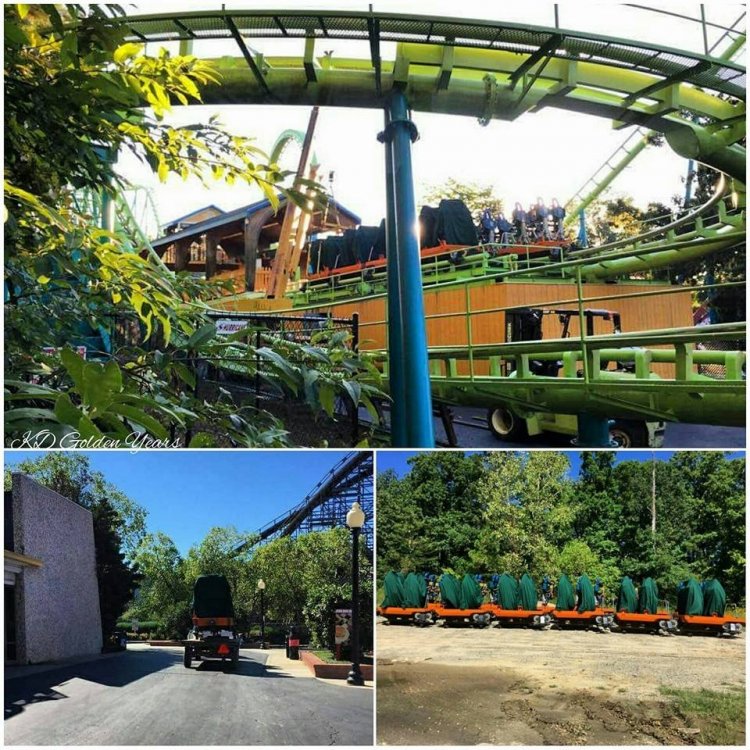

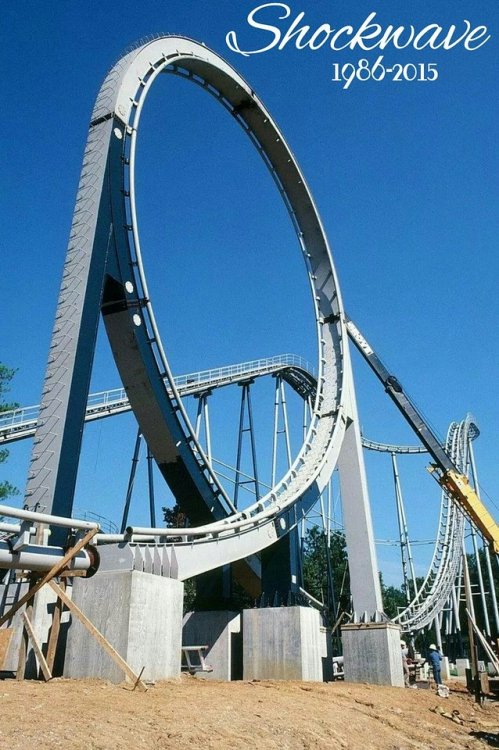
.thumb.jpg.8eec3e413b09a04d1e4039bcd1bbfc38.jpg)
